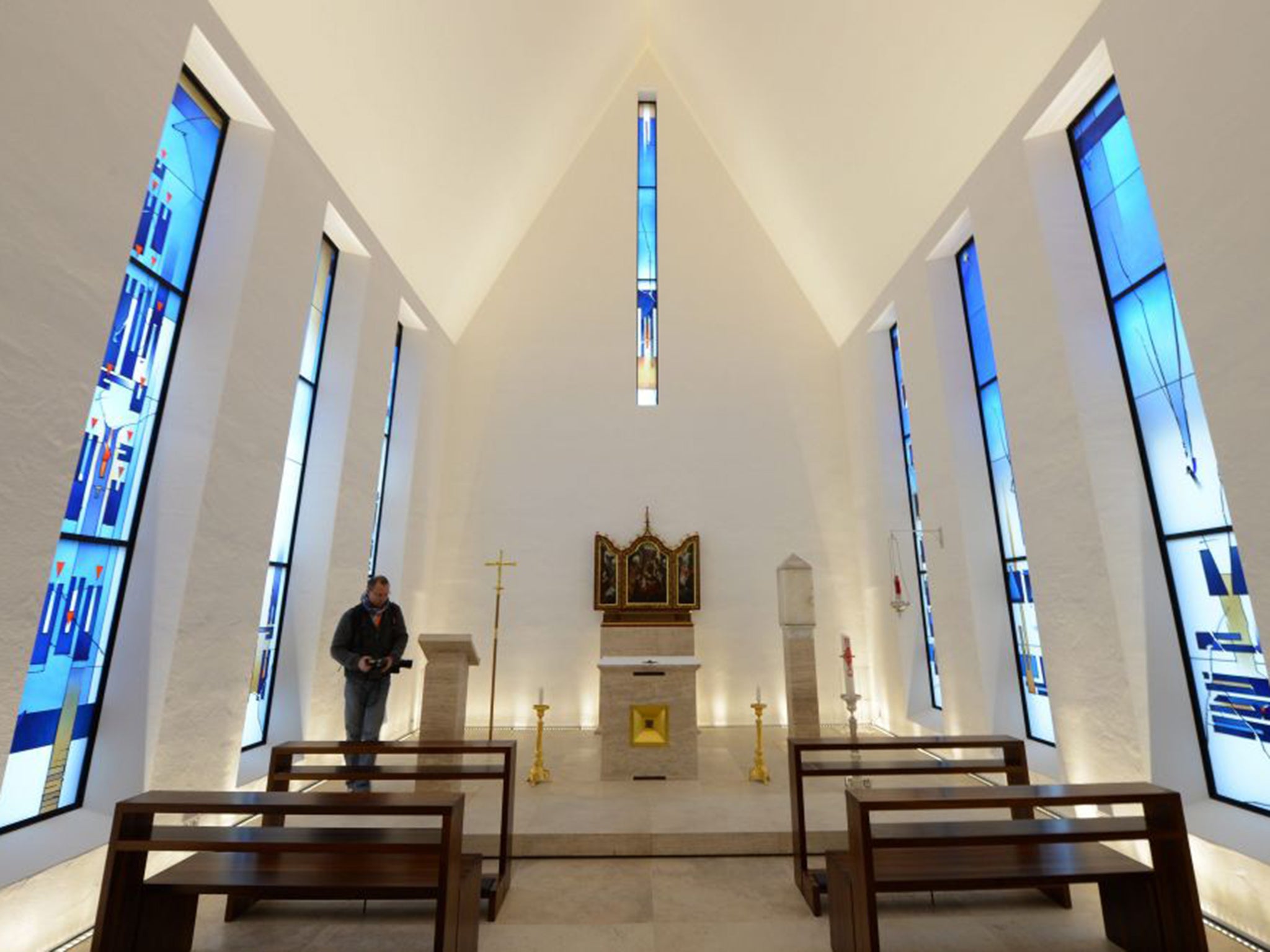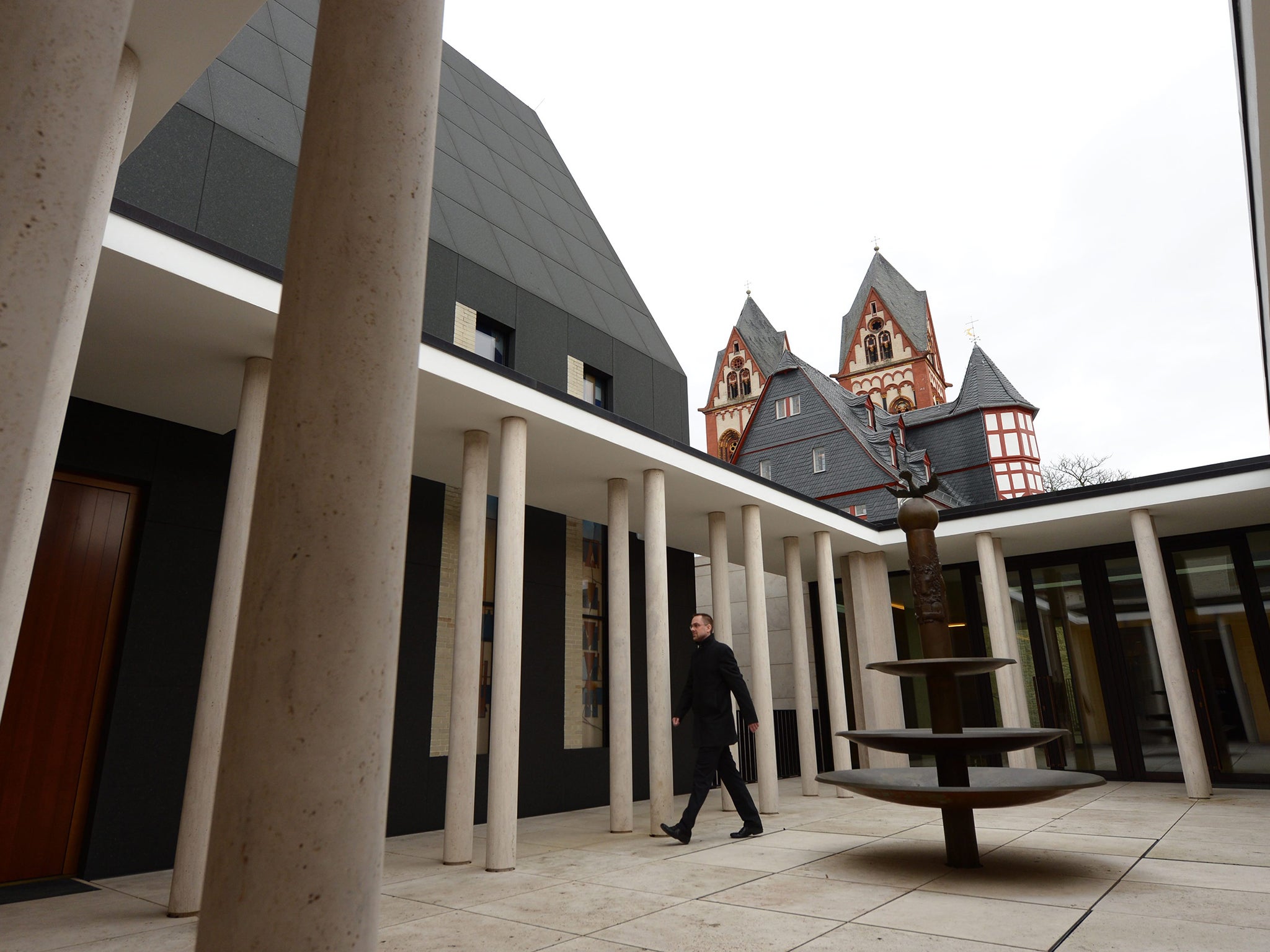Tebartz van Elst: God knows what to do with €31m mansion of Germany's 'Bishop of Bling'
Pope Francis removed the “Bishop of Bling” from his post in March 2014 after it was revealed the bishop had spent a least €31m of secret church funds on rebuilding and re-furnishing his residence

A Japanese koi-fish breeding pond worth €213,000, wall-mounted iPads to close the curtains or even call up a prayer, an opulent bathroom fitted with a Jacuzzi and a “wellness” shower are just some of the luxuries Germany’s disgraced “Bishop of Bling” had enjoyed.
The pampered lifestyle that Limburg’s former Catholic Bishop, Tebartz van Elst, had envisaged for himself in his self-designed palatial residence not only failed to amuse his parishioners – it also embarrassed a Pontiff famous for siding with the poor.
Pope Francis removed the “Bishop of Bling” from his post in March 2014 after it was revealed the bishop had spent at least €31m of secret church funds on rebuilding and re-furnishing his residence.
Almost a year on from Bishop van Elst’s abrupt departure, his former diocese now finds itself landed with an architectural white elephant.
“We want to move away from the headlines and get back to the realities of everyday life,” insisted Limburg diocese spokesman Wolfgang Rosch who said that the church was keen to “de-mystify” the building, “The residence needs to be filled with life and become accepted,” he added.
However, the diocese insists no final decision will be taken about the future of the palace until a replacement for Bishop van Elst is installed. It will be up to the new bishop to decide what to do with the building.

But as the church maintains that a new bishop will not be appointed until 2016 at the earliest, the immediate future of the palace remains uncertain. There have been suggestions that the building could be used as a centre for religious seminars or even as an extension to the diocese’s overcrowded museum next door. Parishioners’ proposals that it be used as a refugee home have so far come to nothing.
In the interim the diocese has decided to open Limburg’s scandal palace to the public. Guided tours of the residence are planned. The property has also been opened to the media, albeit at an embarrassing moment for Germany’s Catholic church: last week the archdiocese of Cologne disclosed it was worth €3.35bn, making it richer than the Vatican.
Bishop van Elst did not skimp on money either. He was a fan of high-end architectural modernism: each of the steps on the winding staircases in his palace are individually illuminated, window frames are bronze, walls are rustic bare stone, the palace library is a vast expanse of back lit glass shelves.
The bedrooms are decked out with iPads let into the walls which enable would be sleepers to close the curtains, switch off the lights or call up the evening prayer on screen, at the mere touch of a finger.
The most expensive item in the scandal palace, it turns out, is a Japanese Koi fish breeding pond which cost €213,000.
The Bishop eventually filled two removal trucks with his belongings on his departure to Rome, where he now holds an advisory post in the Vatican. His portrait may still hang in his empty palace, but he is unlikely ever to return to Limburg.
Join our commenting forum
Join thought-provoking conversations, follow other Independent readers and see their replies
Comments
Bookmark popover
Removed from bookmarks